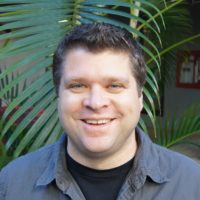Brief Biography:
Iain grew up in Canada where he completed his BSc (Mount Allison University), MSc (Dalhousie University), and a PhD focused on “Habitat use, movement, and vulnerability of sedentary fishes in a dynamic world” (The University of British Columbia). Before coming to James Cook University, he spent several years as a postdoctoral researcher in the United States, associated with the Hawaii Institute of Marine Biology (University of Hawaii), University of California Santa Barbara, and Stanford University.
Research Interests:
Iain is broadly interested in why fish and other marine organisms end up where they do and what that can mean for their future, and the future of people that depend on those organisms, given predicted changes in global climate and increasing human impacts to many of the world’s coastal ecosystems. Trained as a quantitative ecologist and interested in intersections between ecology and social sciences (particularly behavioural economics), Iain uses a variety of analytical approaches to (1) understand what drives distribution and movement of organisms across time and space, (2) predict how changes in those drivers could impact biodiversity and food security, and (3) improve management and conservation strategies to minimize negative effects on ecosystems and the people that depend on them.
Personal Profiles:
Google scholar | Academia.edu | Research Gate | LinkedIn
Publications:
Mora C, Dousset B, Caldwell IR, Powell FE, Geronimo RC, Bielecki CR, Counsell CW, Dietrich BS, Johnston ET, Louis LV, Lucas MP, McKenzie MM, Shea AG, Tseng H, Giambelluca TW, Leon LR, Hawkins E, Trauernicht C (2017) Global risk of deadly heat. Nature Climate Change 7: 501-506. (Altmetric Top 100 [2017])
Mora C, Caldwell IR, Birkeland C, McManus JW (2016) Dredging in the Spratly Islands: Gaining Land but Losing Reefs. PLOS Biology 14: e1002422. doi:10.1371/journal.pbio.1002422.
Correia M, Caldwell IR, Koldewey H, Andrade JP, Palma J (2015) Seahorse population fluctuations in the Ria Formosa Lagoon, South Portugal. Journal of Fish Biology. 87: 679-690.
Mora C, Caldwell IR, Caldwell JM, Fisher MR, Genco BM, Running SW (2015) Suitable days for plant growth disappear under projected climate change: Potential human and biotic vulnerability. PLoS Biology 13: e1002167. [http://journals.plos.org/plosbiology/article?id=10.1371/journal.pbio.1002167]
Caldwell IR, Gergel SE (2013) Thresholds in seascape connectivity: Influence of mobility, habitat distribution, and current strength on fish movement. Landscape Ecology 28: 1937-1948.
Caldwell IR, Vincent ACJ (2013) A sedentary fish on the move: Effects of displacement on long-snouted seahorse (Hippocampus guttulatus Cuvier) movement and habitat use. Environmental Biology of Fishes 96: 67-75.
Caldwell IR, Vincent ACJ (2012) Revisiting two sympatric European seahorse species: Apparent decline in the absence of exploitation. Aquatic Conservation: Marine and Freshwater Ecosystems 22: 427-435.
Caldwell IR, Correia, M, Palma J, Vincent ACJ (2011). Advances in tagging syngnathids, with the effects of dummy tags on behaviour of Hippocampus guttulatus. Journal of Fish Biology. 78: 1769-1785.
Kleiber D, Blight LK, Caldwell IR, Vincent ACJ (2010) The importance of seahorses and pipefishes in the diet of marine animals. Reviews in Fish Biology and Fisheries. 21: 205-223.
Ban NC, Caldwell IR, Green TL, Morgan SM, O’Donnell K, Selgrath JC (2009) Diverse fisheries require diverse solutions. Science 323: 338-339. (letter).
Caldwell IR, Nams VO (2006) A compass without a map: tortuosity and orientation of eastern painted turtles (Chrysemys picta picta) released in unfamiliar territory. Canadian Journal of Zoology 84: 1129-1137.
Caldwell, IR, Vernes K, Bärlocher F (2005) The northern flying squirrel (Glaucomys sabrinus) as a vector for inoculation of red spruce (Picea rubens) seedlings with ectomycorrhizal fungi. Sydowia 57: 166-178.











 Researchers
Researchers Students
Students Alumni
Alumni Management
Management






